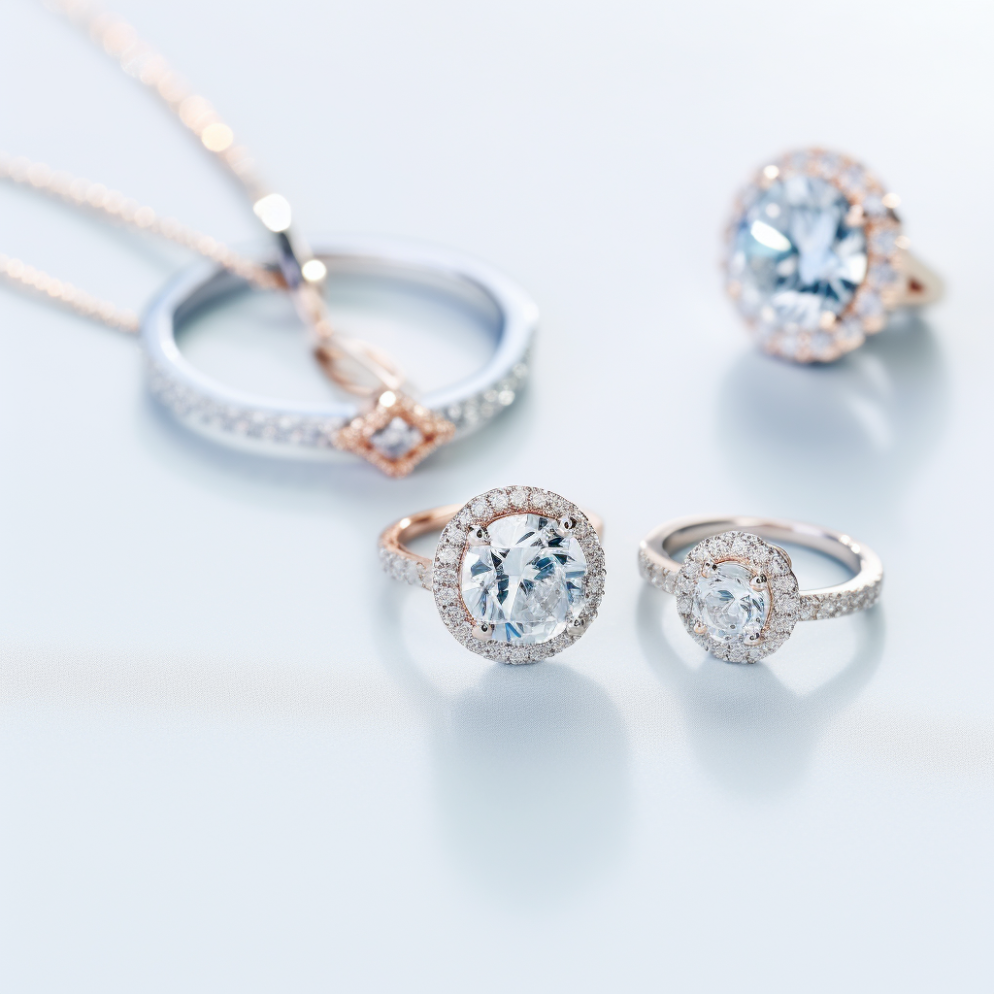When we talk about diamonds, we often hear about two types: lab-grown diamonds and natural diamonds. Both are exquisite, strong, and timeless. But if we look closer, we’ll see they have some differences beyond where they come from. In this article, we will explore these differences to help you choose the right diamond for your next piece of jewellery.
Natural Diamonds: These diamonds form deep within the Earth over millions of years due to extreme heat and pressure. They come to the surface through volcanic eruptions, making their journey incredible and giving them unique qualities.
Lab-Grown Diamonds: Also called cultured diamonds, these are made in controlled environments that copy the natural conditions where diamonds develop deep in the Earth. Scientists use advanced technology to recreate the high-pressure, high-temperature conditions needed for diamond formation. These lab-grown diamonds look, act, and are made just like natural diamonds, both in terms of physical properties and chemical composition.
How do lab-grown diamonds and natural diamonds differ on various attributes?
Origin:
- Natural Diamonds: These gems are formed deep within the Earth’s mantle, under immense heat and pressure, over billions of years. They are mined using kimberlite pipes or from alluvial deposits.
- Lab-Grown Diamonds: These diamonds are created in controlled laboratory environments. They are grown from a tiny diamond seed using advanced technological processes.
Cost:
- Natural Diamonds: Due to the rarity of natural diamonds and the high cost of mining, they are at least 10 times more expensive than lab-grown diamonds.
- Lab-Grown Diamonds: These diamonds are generally more affordable, making them an attractive option for those seeking big diamond stones without breaking the bank.
Environmental Impact:
- Natural Diamonds: Diamond mining can have a considerable environmental impact, including habitat destruction and carbon emissions.
- Lab-Grown Diamonds: Their production has significantly lower carbon footprint and causes minimal environmental disruption. They are often considered as a more eco-friendly choice.
Quality and Purity:
- Natural Diamonds: These diamonds vary widely in terms of quality and purity due to their natural formation. Flaws and inclusions are common.
- Lab-Grown Diamonds: The controlled growth process allows for a higher degree of quality control, resulting in diamonds with fewer imperfections.
Size and Availability:
- Natural Diamonds: Larger natural diamonds are rare, and their availability depends on geological factors. Finding a large, high-quality natural diamond can be a challenge.
- Lab-Grown Diamonds: Larger lab-grown diamonds are more readily available and can be produced with relative ease.
Certification:
- Natural Diamonds: They are typically certified by reputable gemological laboratories, providing information about their characteristics and quality.
- Lab-Grown Diamonds: Likewise, lab-grown diamonds are certified by the same gemological laboratories, ensuring transparency and authenticity in the marketplace.
Market Perception:
- Natural Diamonds: Traditionally, natural diamonds have held a premium status and are often considered heirloom pieces.
- Lab-Grown Diamonds: Although they are gaining acceptance, some buyers still perceive them as less valuable than natural diamonds. However, this perception is evolving.
Compelling reasons to choose natural diamonds:
- Rarity and value: Natural diamonds are special because they are hard to find, which makes them worth more than lab-made ones. Over the last 35 years, the price of natural diamonds has gone up by about 3% each year on average. They keep their value over time, making them a good investment and something you can pass down to your family.
- Easy to resell: It’s tough to resell lab-grown diamonds because they’re always being made, so they’re not unique or rare. Natural diamonds, on the other hand, are unique and rare, which makes them easier to sell. People know there’s only a limited number of natural diamonds.
- Mining jobs: The natural diamond industry provides jobs for 10 million people around the world. The top diamond companies also bring in $16 billion in benefits each year for the places they work in, like helping local communities.
Compelling reasons to choose lab-grown diamonds:
- Ethical sourcing: Lab-grown diamonds are free from ethical concerns, as they are created in controlled environments, eliminating any association with conflict or unethical mining practices.
- Environmental consciousness: Opting for lab-grown diamonds means making an eco-friendly choice. They have a significantly smaller carbon footprint compared to mined diamonds.
- Exceptional quality: Lab-grown diamonds are real diamonds with exceptional quality and clarity, often surpassing their natural counterparts.
- Affordability: Enjoy the elegance of diamonds without the high price tag. Lab-grown diamonds are more budget-friendly as they cost only 10% of the price of natural diamonds, allowing you to choose larger or more intricate designs.
- Customization: Lab-grown diamonds offer endless possibilities for creative customization, from unique shapes to vivid colours.
- Transparency: Reputable producers provide clear documentation and certification for lab-grown diamonds, ensuring transparency and consumer confidence.
Looking for lab-grown diamond jewellery? Visit emori.in/shop now!

